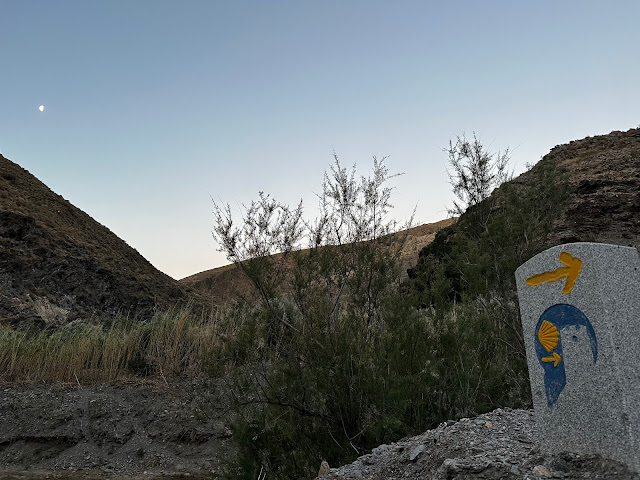Emily Kam Kngwarray's paintings from Utopia.

29 December 2023
08 November 2023
05 October 2023
21 September 2023
Sacred Geography: Pilgrimage Without and Within
These words from John O’Donohue’s poem, ‘For the Traveller’, point to a vastly different spirit of travel than that encouraged by the contemporary notion of ticking things off your ‘bucket list’. Here travel is about encounter rather than consumption, journey more than achievement. It asks you to attend to ‘the self you bring along’ as well as the wonder of ‘the places you go’. It suggests, as O’Donohue puts it, that ‘a journey can become a sacred thing’.
Over the past three years, I’ve been privileged to collaborate with the Tasmanian Walking Company (TWC) leading groups to walk the Overland Track in this spirit. The idea of offering a contemplative or ‘sacred geography’ walk emerged from the TWC’s commitment to providing a way of engaging the experience of this landscape reverently and reflectively, listening both outwardly and inwardly. Every walk, we are amazed at the diversity, beauty and majesty of the wilderness: the lakes, mountains and rocky outcrops, the huge, centuries’ old King Billy pines and tiny wildflowers, the dense, damp rainforests and the wide horizons of the button grass plains. Every walk, we enter into a space and time that allows us to be open in new and different ways to what O’Donohue calls ‘the territories of spirit where you will discover more of your hidden life, and the urgencies that deserve to claim you’.
So how does this transformational encounter happen? As I reflect on these experiences, a few elements strike me particularly. There’s the effect of being physically stretched and fully embodied. Although we sleep at nights in comfortable huts, with hot showers and delicious food, walking in the wilderness necessarily exposes us to the elements. There can be rain, wind, sun, sometimes even snow! The track is rugged in parts and legs get tired. Pilgrimage involves putting the whole of yourself on the way. It’s an incarnate practice. Risking this exposure, enjoying this immersion, shows us things about ourselves and our world we can discover in no other way.
Then there are the opportunities to listen and learn from our companions, our own spirits and from country itself. We seek to be aware of the first peoples of this land, whose lives, culture and stories were so profoundly fractured by colonisation. We begin each day with silent meditation and a brief reflection, drawing from poets, writers and the contemplative tradition. We walk in company with times of both conversation and intentional silence. At the end of the day, there’s an invitation to reflect on experience and deepen our awareness of what’s unfolding. And finally there’s the awe-inspiring nature of the landscape itself.
The Overland Track begins at Cradle Mountain and traverses the Tasmanian Wilderness WorldHeritage Area to end at Lake St Clair. In the midst of this vastness we touch into our own smallness and put in perspective many of the things that preoccupy us at home. At the same time, we realise more fully our belonging, our sense of being fellow creatures, members of the family of things.
In the Christian contemplative tradition, a distinction is sometimes drawn between ‘natural contemplation’ of the world around us, and interiorly focused, imageless contemplation of God’s very being. In this context, natural contemplation is sometimes conceived as a stepping stone to what Rowan Williams has called ‘true “theology”, the silent gazing upon God that is the goal of all our discipleship’.* But this distinction seems less pronounced in Australian indigenous spirituality. Indeed Miriam-Rose Ungunmerr’s teaching on dadirri, the practice of ‘inner deep listening and quiet still awareness’, speaks to the possibility of a simultaneity of deep inwardness and profound awareness of the living world.**
And ultimately, I believe, these two forms of contemplation belong together. Anyone who meditates with interior focus will know how this practice deepens our awareness of the natural world and our attunement to God’s immanent presence; anyone who pays loving attention to the world is deepening their capacity for other-centred contemplation, which is the heart of prayer. To bring together these elements of the contemplative way in the midst of the Tasmanian wilderness is a profound blessing, which I hope is part of the healing of our own souls and the healing of the wounds of our land.
Sarah will be leading a Sacred Geography walk from January 27 – February 1, 2024.
For more information go to https://www.taswalkingco.com.au/overland-track-with-Sarah-Bachelard/
*Rowan Williams, The Archbishop of Canterbury’s Address to the Thirteenth Ordinary General Assembly of the Synod of Bishops on the New Evangelization for the Transmission of the Christian Faith, 10 October 2012, s.7.
**Miriam-Rose Ungunmerr, ‘Dadirri: Inner Deep Listening and Quiet Still Awareness’, 1988. https://www.miriamrosefoundation.org.au/dadirri/



















































































































